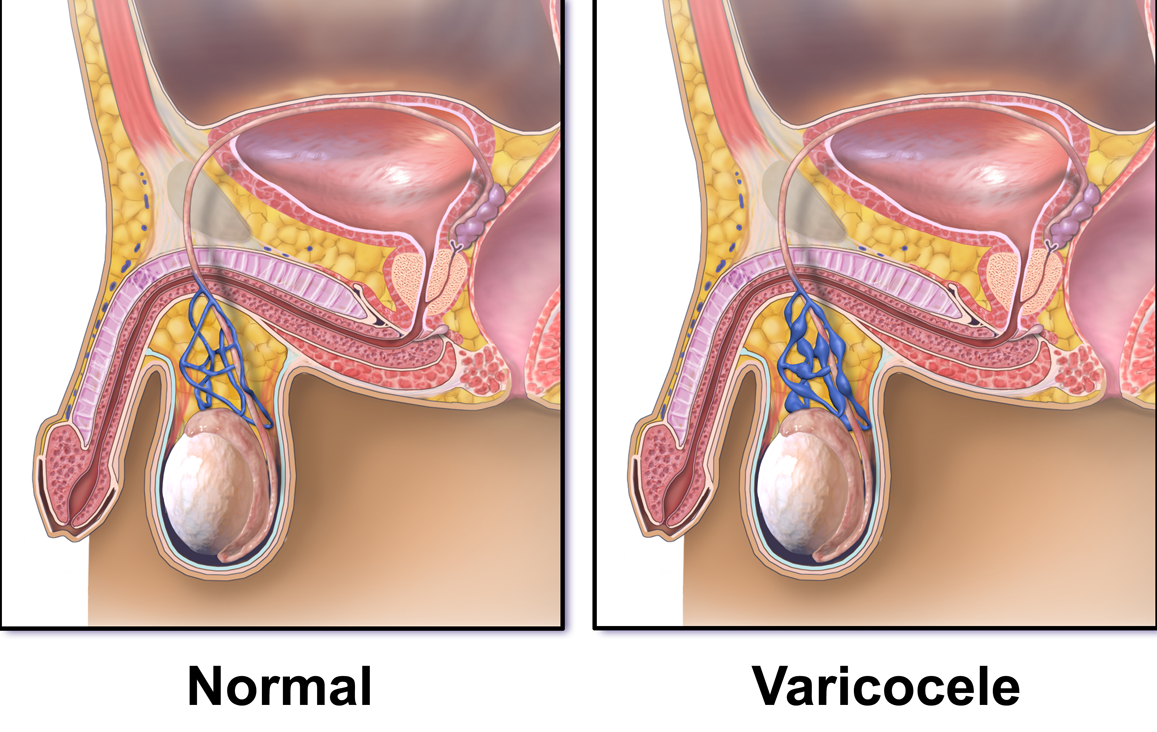Varicocele
What is a varicocele?
A varicocele is an enlarged vein in the scrotum next to the testicle. Varicocele is similar to varicose veins in the leg. Varicocele is a very common condition that affects 15% of men.

By BruceBlaus - Template:Town, CC BY-SA 4.0, commons.wikimedia.org/w/index.php?curid=44969448
Urologist Dr. Brems explains Varicocele
What causes varicocele?
Veins have valves which help blood circulate through the body and back to the heart. When the valves in the vein are weak or don’t work properly, blood pools in the vein and causes the vein to enlarge.
What are the symptoms of varicocele?
Varicoceles can cause discomfort in the scrotum often described as heaviness or dragging sensation. Pain may feel congestive or “like a toothache”. The pain is generally mild to moderate. Discomfort gets worse with long periods of sitting, standing or physical activity. The pain is typically relieved by lying down.
In boys, varicocele can slow normal testicle growth.
With time, varicoceles may enlarge and become more noticeable.
Varicocele can impair sperm production and cause infertility. Men trying to start a family or men who may want to start a family in the future, may benefit from varicocele treatment.
How is varicocele diagnosed?
Diagnosis a varicocele starts with a medical history and physical exam. Examination may be performed laying down and standing without and with bearing down.
Scrotal ultrasound may be used to evaluate the testicles, the glands on top of the testicles (epididymis) and assess the presence and size of varicocele. Blood work may be drawn to look at hormone levels and other factors that can affect sperm production. Semen analysis may be used to evaluate sperm count and quality.
What are treatment options for varicocele?
- Surgery
- Inguinal (groin) without or with microscope
- Laparoscopic
- Embolization
Varicocele embolization
The procedure takes place in an outpatient setting in our Interventional Radiology suite. This is in an office setting and does not require hospitalization. Embolization is performed with local anesthesia and sedation (“twilight sleep”).
The Interventional Radiologist makes a small cut in the groin to insert a tiny tube called a catheter into the femoral vein. Moving x-ray called fluoroscopy is used to guide the procedure. The catheter is guided into the testicular vein.
Once in the testicular vein, x-ray dye called “contrast” is injected to map out the problem area. Coils or particles are used to block or “embolize” the varicocele.
Once the vein is blocked, the damaged vein is shut off and the blood flow is redirected to the surrounding healthier veins. Pressure decreases in the varicocele which helps restore normal function and ease pain.
Interventional Radiologist Dr. Piechowiak explains Varicocele Embolization
Recovery
Varicocele embolization usually lasts about 30 to 45 minutes. Recovery typically lasts two hours. Moderate activity is usually resumed in 24 to 48 hours.
Advantages of varicocele embolization
- Office based and minimally invasive
- Quick recovery times
- Low risk of complication
- No general anesthesia needed
- Multi-disciplinary approach
- Ease of scheduling
Contact us to request an appointment or ask a question. We're here for you.



